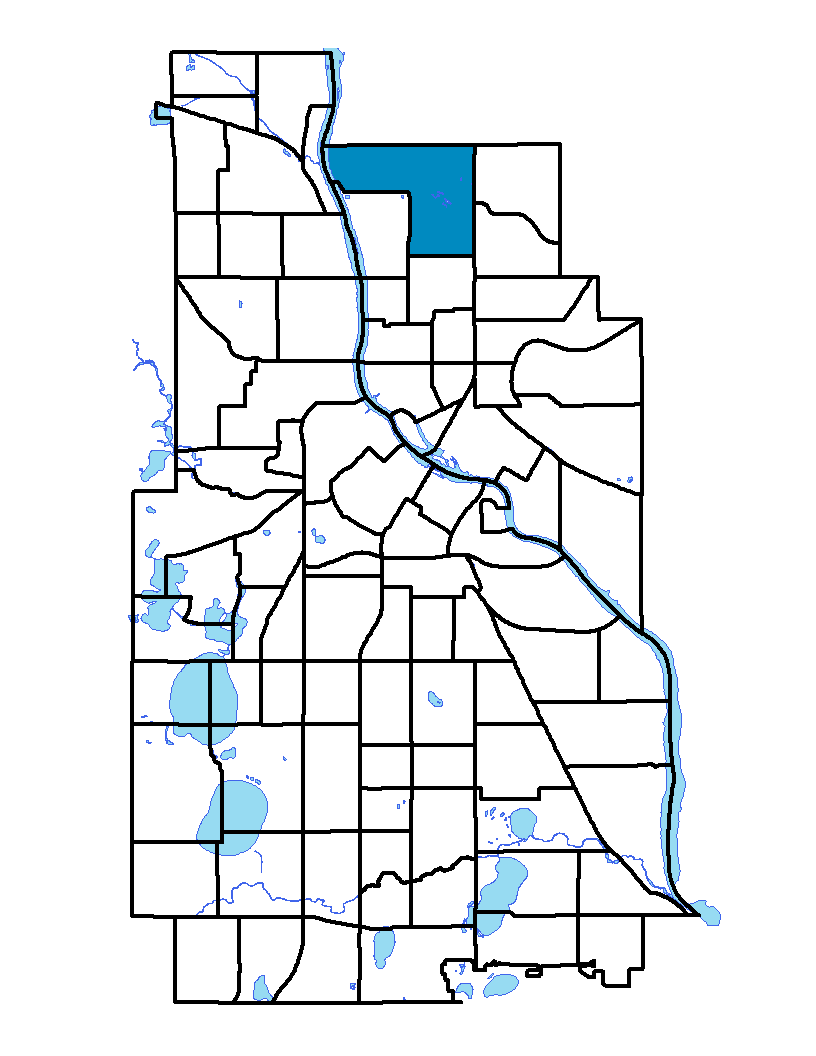The Columbia Park neighborhood in northeast Minneapolis is bound on the north by 37th Avenue, on the east by Central Avenue, on the south by 27th Avenue and St. Anthony Boulevard and on the west by University Avenue NE, 4th Street NE and the Mississippi River. This neighborhood was named for three reasons: Columbia Park, one of the area's parks; the park's acquisition in 1892, the "Columbian" year, the 400th year since Christopher Columbus' first voyage to the Americas; and the adjacent suburb Columbia Heights. The neighborhood has residential areas tucked away with industrial surroundings, between the city of Columbia Heights and the neighborhood's Columbia Park and golf course. Its north end consists of a narrow strip of streets from Main Street to Central Avenue while Columbia Boulevard, which runs north of the golf course, looks much like Minnehaha Parkway with the same type of housing – stucco and brick Tudors and two-story colonials.
To learn more about the neighborhood association visit: www.columbiapark.org
Indicator Details
| Indicators | Primary Domain | Indicator Value |
Rank |
Tier |
|---|---|---|---|---|
| Reading Proficiency | Educational Opportunities | -% | - | Data N/A |
| Chronic School Absence | Health Systems and Public Safety | -% | - | Data N/A |
| High School Graduation Rate | Educational Opportunities | -% | - | Data N/A |
| School Readiness Scores | Educational Opportunities | -% | - | Data N/A |
| Residential Proximity to Traffic | Environmental Hazards | 0.0% | 1 | Top |
| School Proximity to Traffic | Environmental Hazards | 0.0% | 1 | Top |
| Vacancy Rates | Housing | 3.8% | 8 | Top |
| Access to Parks and Open Space | Natural Areas | 21.2% | 9 | Top |
| Long-Term Unemployment | Employment Opportunities | 3.6% | 15 | Top |
| Local Business Vitality | Economic Health | 59.8% | 22 | Top |
| Tree Cover | Natural Areas | 30.3% | 23 | Top |
| Residential Mobility | Social Cohesion | 83.2% | 29 | Top |
| Food Desert | Neighborhood Characteristics | 100.0% | 31 | Middle |
| Violent Crime | Health Systems and Public Safety | 39.7 | 34 | Middle |
| Business Retention | Economic Health | 2.6% | 35 | Middle |
| Preventable Hospitalizations | Health Systems and Public Safety | 2 | 35 | Middle |
| Access to Mainstream Financial Services | Economic Health | 21.0% | 37 | Middle |
| Age of Housing | Housing | 85.6% | 39 | Middle |
| Public Assisted Households | Employment Opportunities | 17.9% | 43 | Middle |
| Adult Educational Attainment | Educational Opportunities | 90.5% | 44 | Middle |
| Proximity to Brownfield Sites | Environmental Hazards | 5.4% | 45 | Middle |
| Employment Rate | Employment Opportunities | 67.4% | 49 | Middle |
| Blood Lead Levels in Children | Housing | 4.8% | 50 | Middle |
| Proximity to Superfund Sites | Environmental Hazards | 32.1% | 52 | Middle |
| Transit Accessibility | Transportation | 276.5 | 53 | Middle |
| Voter Participation | Social Cohesion | 22.4% | 54 | Middle |
| Low Birth Weight | Health Systems and Public Safety | 8.8% | 54 | Middle |
| Excessive Housing Cost Burden | Housing | 31.5% | 55 | Middle |
| Commute Mode Share | Transportation | 22.6% | 58 | Middle |
| Offsite Alcohol Outlets | Neighborhood Characteristics | 2 | 61 | Bottom |
| Motor Vehicle Collisions | Health Systems and Public Safety | 12.7 | 61 | Bottom |
| Walkability | Neighborhood Characteristics | 44 | 71 | Bottom |
| Preschool Enrollment | Educational Opportunities | 26.2% | 71 | Bottom |
| Toxic Releases from Facilities | Environmental Hazards | 80.4% | 74 | Bottom |
| Travel Time to Work | Employment Opportunities | 24.8 minutes | 79 | Bottom |
| Pedestrian Connectivity | Transportation | 51 | 85 | Bottom |
| Household Transportation Costs | Transportation | 19.8% | 87 | Bottom |

